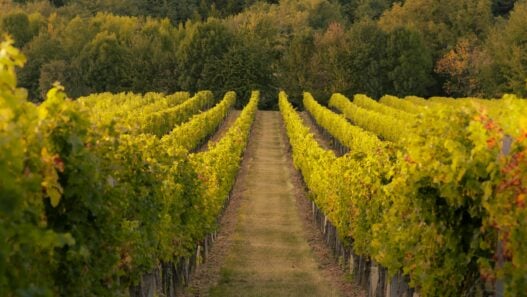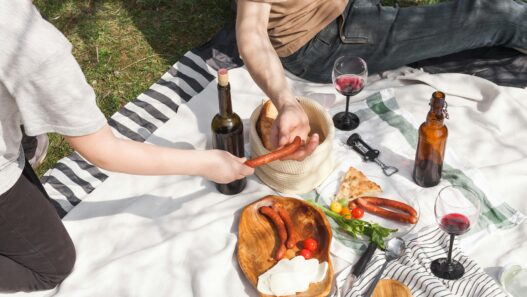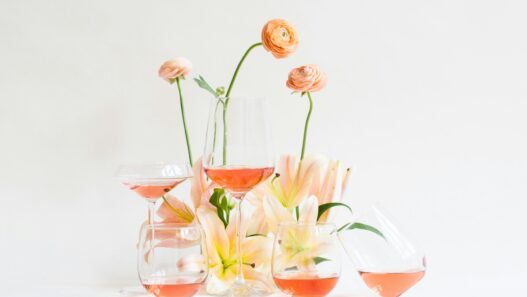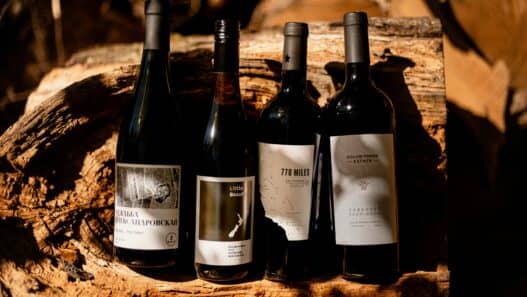Wine Is for Everyone—Let’s Make It Sippable
Wine doesn’t have to be complicated. Or exclusive. Or anything close to snobby. I promise.
Shameless self-plug: at Sippable, we believe wine should be approachable, fun, and a little bit magical—something you sip because you want to, not because you’re trying to pass a sommelier exam. That’s our core ethos. Our manifesto. Now, we’ve got your back, whether you’re opening your first bottle or wanting to dive deeper into the differences between Pinot Grigio and Pinot Noir. Think of this as your no-pressure, no-pretense introduction to the world of wine.
Let’s jump back to the beginning. Allll the way.
What Is Wine, Really?
At its core, wine is fermented grape juice. That’s it.
But it’s also a product of place (terroir), grape variety, climate, and time. Different grapes, grown in different soils under different skies, turn into an incredible variety of styles—from crisp and citrusy to bold and beautiful. The magic is in the transformation: yeast consumes grape sugar, creating alcohol, flavor, and aroma. The rest? That’s storytelling in a glass.
There are thousands of wine grape varieties out there, but most bottles you’ll see are made from a relatively small group: Cabernet Sauvignon, Chardonnay, Pinot Noir, Merlot, Sauvignon Blanc, and so on. Each has its own vibe, and part of the fun is finding what fits yours.
Red vs. White vs. Rosé: What’s the Difference?
If you’ve ever stared down the wine aisle feeling completely overwhelmed, you’re not alone. Here’s a simple breakdown:
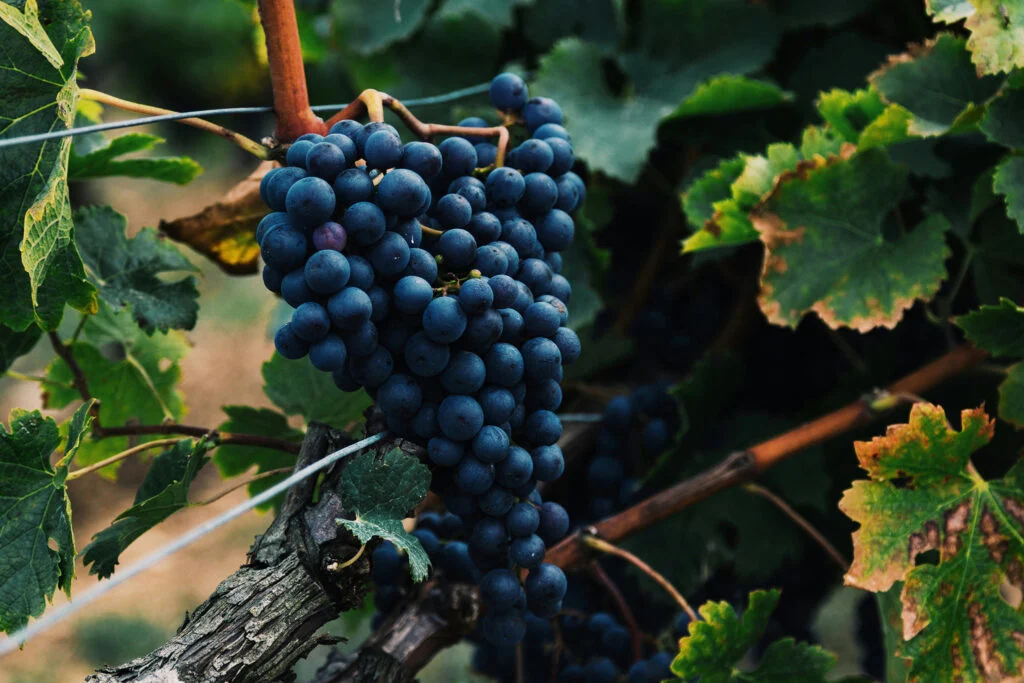
🍷 Red Wine
Made from red or black grapes, and the skins stay on during fermentation. That’s where reds get their color—and tannins, the compounds that give you that dry, slightly astringent sensation.
Common styles: Cabernet Sauvignon, Merlot, Pinot Noir, Syrah/Shiraz
Flavors to expect: Dark fruits (blackberry, plum), spice, sometimes earthy or smoky notes
Growing regions: France (Bordeaux, Burgundy, Rhône Valley, Languedoc), United States (Napa Valley, Sonoma, Oregon, Washington), Australia (Barossa Valley, McLaren Vale, Yarra Valley), Chile (Maipo Valley, Colchagua Valley), Argentina (Mendoza), Italy (Tuscany, Friuli), South Africa (Stellenbosch), New Zealand (Central Otago, Marlborough)

🥂 White Wine
Typically made from white grapes, but red grapes can be used too (as long as the skins are removed early). No skin contact = lighter color, often crisper and more refreshing.
Common styles: Chardonnay, Sauvignon Blanc, Riesling, Pinot Grigio
Flavors to expect: Citrus, green apple, peach, floral notes, sometimes creamy or buttery
Growing regions: France (Burgundy, Loire, Alsace), United States (California, Oregon, Washington, Finger Lakes), Australia (Clare, Eden, Yarra, Margaret River), New Zealand (Marlborough), Italy (Veneto, Friuli, Alto Adige), Germany (Mosel, Rheingau, Pfalz), Austria (Wachau), Chile (Casablanca), South Africa (Stellenbosch, Elgin)
🌸 Rosé
Rosé is made from red grapes, but the skins are left in contact with the juice only briefly—just enough to tint the wine a lovely blush or salmon color.
Common styles: Grenache Rosé, Syrah Rosé, Pinot Noir Rosé
Flavors to expect: Strawberry, watermelon, herbs, citrus—bright and breezy
Growing regions: France (Provence, Rhône Valley, Loire Valley), Spain (Navarra), United States (California, Oregon), Italy (Tuscany, Abruzzo), Australia (Barossa Valley, McLaren Vale), Chile (Central Valley)
📝 Pro tip: Color doesn’t equal sweetness. Many dry wines, including rosé, are light in color. Always check the label or ask for a recommendation.

How to Taste Wine (Without Being Obnoxious)
You might have seen the videos on social media where people parody tasting wine as this complex game of charades, where you get a tiny pour from the sommelier or server, hold it up to the light and bring it to your ear as if there’s some mystical secret you need to listen for to enjoy it. None of the pomp is needed, but we feel that you will appreciate your wine most by following these simple steps.
1. Look 👀
Check out the color. Is it a deep purple, pale gold, or salmon pink? Color can hint at age, grape variety, or style. Don’t judge a book by its cover or a wine by its color. It might surprise you!
2. Smell 👃
Give it a gentle swirl and take a sniff. What do you smell? Fruit? Flowers? Spice? There are no wrong answers—only what you notice.
👆 Swirling your wine before tasting isn’t just for show!
It serves a purpose; it helps to aerate the wine which, in turn, coats your glass and brings out more aromas and flavors.
3. Sip 👄
Take a small sip and let it roll around your mouth. Notice how it feels (light or full? smooth or sharp?) and what flavors come through. Does it change on the finish (after you swallow)? That’s the fun of it.
🎯 The Sippable mindset: You’re tasting to enjoy, not to impress. Trust your senses, and don’t stress about naming every aroma.
Serving Temperature & Storage Basics
Wine, like people, prefers to be comfortable. Serve it too hot or too cold, and you’ll mute the flavors. Here’s a quick cheat sheet:
🧊 Chill, but not too much:
- Sparkling & light whites: 40–50°F (fridge cold)
- Full-bodied whites & rosé: 50–55°F (slightly cooler than room temp)
- Light reds (like Pinot Noir): 55–60°F (a short chill in the fridge works)
- Full reds: 60–65°F (slightly below room temp)
How do you get the right temperature without having a fancy wine fridge? Use what you have already—your regular fridge. Put your wine in the fridge for a bit before you plan to open, and use the following times as a general guide:
- Sparkling & light whites: The night before, ideally. 4-6 hours works, too
- Full-bodied whites & rosé: 30 minutes to 1 hour
- Light reds (like Pinot Noir): 20-30 minutes
- Full reds: 10-20 minutes
If you’re not drinking right away, you’ll want to store the wine in a way as to avoid damaging it.
🏡 How to Store Wine at Home
- Short-term: Keep bottles in a cool, dark place away from sunlight and temperature swings. We like a lower cabinet (away from an oven) in the kitchen.
- Long-term (if aging): Aim for a stable, 55°F-ish environment with horizontal storage to keep corks moist. You’ll have to look into a wine fridge if you’re serious about aging.
Ready to Sip Smarter?
Wine is a journey, and every bottle is a step. There’s no need to memorize grape names or nail a blind tasting on day one. Try different bottles, take note of what you like, rinse, and repeat.
At Sippable, we’re here to make wine feel like a conversation, not a lecture. Stick with us and you’ll not only taste the difference—you’ll understand it.
🍷 Cheers to keeping wine sippable.



